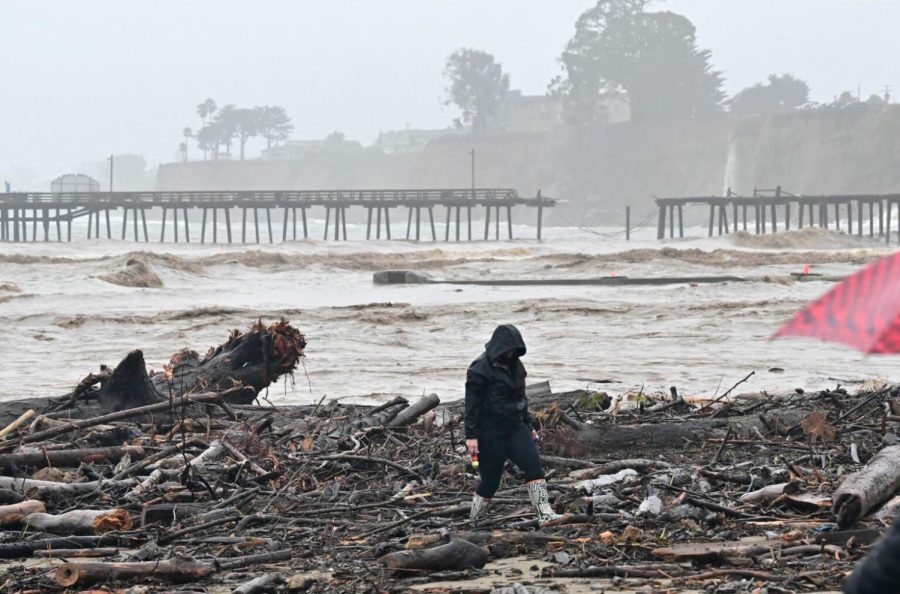It’s (not) Always Sunny in California: Bay Area Taken Over by Storm
February 1, 2023
Capitola, a small beach town located north of Monterey Bay, lost one of its tourist attractions on Jan. 10 when its beloved pier, built in 1857, collapsed due to the recent California tides.
Sadly, the small beach town isn’t the only place that faced tragedy. The storm, referred to as the “Pineapple Express,” has taken over California in early January, demolishing homes, flooding cities, and ravaging local communities. The city of Sacramento used canoes and jet skis to service residents and maintain operations as rivers filled up past their banks and flooded into the streets. The county of Sacramento seemed to have taken the biggest hit, accounting for the highest statewide death toll of five and experiencing an approximate 11 inches of flooding. With $1 billion in damages and nearly 20 deaths, California is in a state of grief and worry regarding its future in terms of infrastructure repair and climate.
Since the tempest began on Dec. 26, the winter storm season has been marked as one of the worst disasters the state has seen. “The country is here for you and with you. We are not leaving till things are built back and built back better than they were before,” commented Pres. Joe Biden as he toured damages along the California coastlines with Gov. Gavin Newsom and Sen. Alex Padilla.
In response to the disastrous weather, Biden has declared a state of emergency at the North American Leaders Summit on Jan. 8, permitting the Department of Homeland Security, and the Federal Emergency Management Agency to provide relief for all those who have suffered, and aiding in the damages. The president declared a separate, more severe state of disaster in certain counties that would require personal aid, such as San Mateo, Santa Cruz, and Sacramento.
While the storm flooded the state with water, California continues to face drought conditions. Despite record-breaking measures of rain — ranging from one foot to 18 inches of rainfall — the issues that climate change is intensifying will likely fail to be resolved, since a single passage of storm won’t be able to reverse the two-decade trend of water scarcity at reservoirs and water pumps persists.
East Bay has also faced its fair share of destruction. A Street, which connects Castro Valley to Hayward, has been demolished by the flooding of the San Lorenzo river. Coyote Hills Park in Fremont, one of seven regional East Bay parks, had to be closed due to flooding. The MLK shoreline in Oakland garnered so much trash from the rain that the district held a post-storm clean up to help restore the land.
Staggering through snow and relentless rain, February will bring back the “dry” climate to Northern and Central California as the storm surges north and as winter nears its end.

















